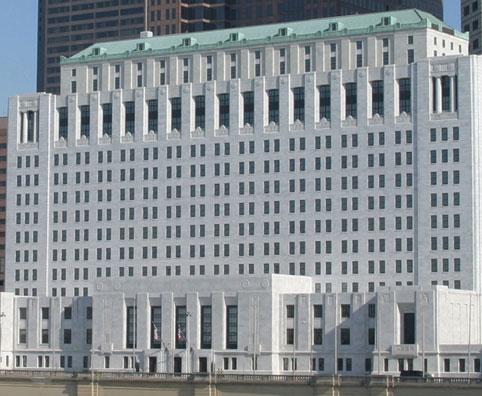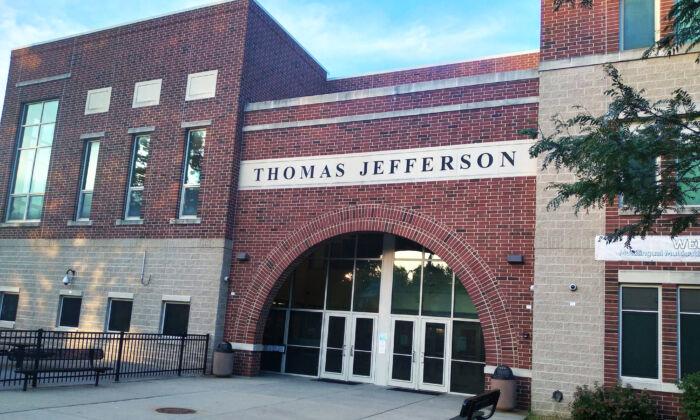The approval of a new congressional district map for Ohio next could be in the hands of a federal court instead of the Ohio Supreme Court.
That comes much to the chagrin of candidates who do not yet know where to stump, are having to re-examine campaign budgets leading up to the May 3 primary election, or plan for it to be held on a later date.
Taxpayers are also looking at the possibility of having to foot a $25 million to $30 million cost of an additional election that could be held in August for the offices that fall within a district, something that candidates say is a bad time for elections.
On top of that, candidates and incumbents believe that the constitutional rights of voters are being infringed upon by the Ohio Supreme Court, or at least the judges who have rejected three proposed congressional district maps since September.
The proposed maps were submitted by the Ohio Redistricting Commission, including members Gov. Mike DeWine and Secretary of State Frank LaRose, attempting to get a new congressional district map approved by the state’s high court in time for the primary.
Early voting is supposed to begin on April 5, but it’s unclear whether state legislative races are going to appear on the May 3 ballot after LaRose pulled them the week of March 21, citing the districts’ uncertain legal status.
LaRose also has said that only state legislature approval could change the election date.
An update on the Lorain County Board of Elections site in northeast Ohio near Cleveland stated:
“On March 16, 2022, the Supreme Court of Ohio invalidated the Ohio General Assembly district plan adopted on February 24, 2022. Therefore the offices of Ohio House, Senate, and State Central Committee will not appear on the May 3 Primary Election Ballot.
“Voter district information ... will be updated as soon as that information is available.”
Four judges—Democrats Michael Donnelly, Melody Stewart, and Jennifer Brunner; and Republican Maureen O'Connor—on the state’s high court have rejected the maps, claiming they favor the Republicans, hurt the Democrats, and violate gerrymandering laws implemented by the state in 2015.
Gerrymandering is the term used in the district map process that benefits one political party throughout districts and hurts the one who opposes it.
Now, after the commission has racked up three misses within the Ohio Supreme Court and the commission submitted its fourth proposed map on March 28, candidates running for state offices say it makes it nearly impossible to put together a campaign strategy.
There are 33 Ohio Senate districts and 99 Ohio House districts. Every 10 years, the districts must be redrawn based on the population taken by the U.S. Census.
A hearing for a federal lawsuit in the U.S. District Court is scheduled for March 30.
Republican activist groups are trying to get the U.S. District Court to impose the map that the state supreme court rejected earlier in March.
A panel of three federal judges also has indicated it’s considering delaying the primary, or at least the start of early voting, to give the state more time, but U.S. District Judge Algenon Marbley said he could intervene if the date of the May 3 primary is jeopardized.
The federal court also could rule on a map or possibly implement one of its own.

Candidates and incumbents from all corners of the state oppose the district court interfering in Ohio elections and believe if the federal court steps in and draws up a new map, it would set a bad precedent when it’s the state’s job to oversee its elections.
“It’s beyond frustrating,” said Katherine Shutte, a first-time candidate from Beavercreek running for state representative against incumbent Brian Lampton on the Republican ticket.
The district in southwest Ohio covers Greene County’s District 73 near Dayton, which includes Wright-Patterson Air Force Base, but the newly-proposed maps show that it could become District 70.
“The uncertainty of all of this makes it more difficult to put together a campaign,” Shutte told The Epoch Times.
“It makes it nearly impossible to put together a campaign strategy. It’s harder for the newcomers. What your district is today, may change tomorrow. I don’t think the federal court should get involved in the state’s election process, though. The states need to oversee their own elections.”
Shutte, who opposes critical race theory in schools, supports the military, and medical freedom, believes the district needs a representative who is more accessible to constituents.
She added she has been a bit more conservative with the purse strings of her budget having has spent about $2,000 so far.
Much of her campaign has been door-to-door, going to events, and personally meeting with people in the heart of her district.

Scott Wiggam, another Republican, is running for re-election in northeastern Ohio’s District 1 in Wayne County and echoed Shutte’s sentiments. Wiggam is unopposed as a Republican in the primary, but will be up against Democratic opponent Mark Gooch in the November general election.
“The Ohio Supreme Court is infringing upon voters’ rights,” Wiggam told The Epoch Times. “They keep moving the goalposts by continuing to reject the redistricting maps. The court’s judges have become politically involved and are trying to carve out Democratic districts.”
Judge O'Connor is retiring at the end of this year, and Donnelly and Stewart are up for re-election in 2024.
“It’s been an ongoing constitutional crisis,” Wiggam added about the map redistricting situation.
“Moving the primary back to August would be hurting the challengers and the incumbents. The judges say there are no safe Democratic districts, and that the maps put the Republicans at an unfair advantage.
“Well, Ohio has been trending red [Republican] in an aggressive way in recent years, and it’s getting harder to find a district that would favor the Democrats.”
The commission also has called in outside groups to help with the map with two mapmaking consultants hired last week.
University of Florida political scientist Michael McDonald and California mapping consultant Douglas Johnson began working on it the week of March 21.
Their maps all were designed to favor each party to win districts perfectly in proportion to their share of the recent statewide vote, 54 percent Republican and 46 percent Democratic, and included only a handful of competitive districts, some of which leaned Republican and some of which leaned Democrat.





